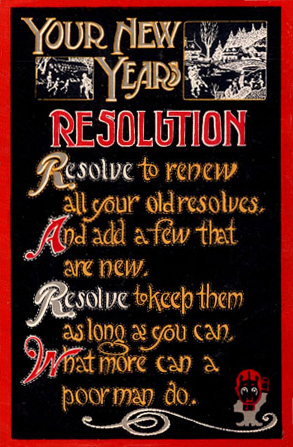I just turned 30 this past April. As my birthday was approaching, I spoke to lots of people who had gone through their 30s, and all the feedback I received centered around one thing: Your 30s are a time of change, and will be much more awesome than your 20s were.
To that end, I thought I’d share some self-reflection strategies for those times where change needs to happen that just happen to be carefully worded so that they can apply to business as well. Wasn’t that clever of me?
I. Accept the reality of your situation. Go ahead, give it a shot.
Chances are, things weren’t what you thought they were – If the bottom has fallen out of your situation, consider for a moment the prospect that you may have been judging the reality of your situation inaccurately to begin with, and that the new realizations and trends can serve as a reality check and give you a new place to work from.
Rethink, don’t combat – There is the tendency when we feel attacked both as people and as professionals to want to strike out in anger against those we perceive are doing the hurting (e.g. See: RIAA suing its customers, the venom with which traditional print media regards bloggers, blaming society/our parents/ex-girlfriends for our current situations). Often, those people are not actually the root cause of the issue, but rather are symbolic of a deeper, more internal issue. This is a perfectly natural reaction, but once you’re done throwing a tantrum, it’s time to look within and see exactly what led to this behavior.
The goal is to rebuild, not to regain – Take this opportunity to look at what’s not working and change it, rather than trying desperately to get things ‘back to the way they were’. Things will never be the way they were, because the world and your place in it is fundamentally different at this moment than it has ever been. Accepting this can free you to decide where you ultimately want to end up.
II. Figure out where you want to go
Identify and embrace core values. Figure out what they’re not, then figure out what they are. – Get back to basics. What do you stand for? Be as specific as possible. In thinking about your core values, throw out all the mottos, taglines, things people have complimented you onand phrases that you’re used to parroting back into the world. If it helps, write them all down on paper and cross them out with a big pen. Those are not your values. It’s time to get real.
Your core value statement is what sets you apart as unique in the world, it will need to be specific enough that you can measure every action you take against it to see if you are aligned or not.
Start from scratch, sort of – OK, so take those core value statements that you came up with, and consider: if you had the chance to reset yourself, without being beholden to all your current baggage and learned behaviors, what specific values and activities would you embrace? What would you immediately leave by the side of the road? What would you take out back and stomp on repeatedly? How would you interact with others? What kind of impression would you want to make?
III. Identify barriers to getting there
Figure out why you’re not there already – An important step in being able to take action is to look at why you haven’t yet done so. Accept that some of the reasons may be emotional in nature and therefore not objectively rational. The important thing is to get as many of them ‘down on paper’ as possible, so you can evaluate whether they should continue to be able to hold you back.
Identify the consequences of not doing anything – Chances are, if you’ve read this far, you are at least considering addressing change. However, to really drive the point home, it may be helpful to take a look at what might happen should you continue on your current course. Just keep in mind that not making a decision is, in fact, a decision as well.
IV: Do something about it!
Yes, this is the scary part. Hopefully parts I-III have given you enough preparation and data so that you can be aware of what you need to do, how to gauge whether you’re being true to you core goals. If you’ve made it this far, you are ready to act.
Don’t try to do it all at once, but do something. – Take some small steps, measure, adjust. Try something new, do something differently than you have in the past. Put yourself out there in a way more aligned with your real goals. Commit yourself to ramp up the process.
Measure, measure, measure – As you get more comfortable with the action -> measurement -> adjustment loop, you will find that opportunities for change begin to present themselves in a way that they haven’t before. As with the actions you took when ramping up, it is critical to test new opportunities against your core goals and values. If they are in alignment, then act, measure, adjust accordingly. If not, dont do them. When reviewing, always remember to ask yourself whether you getting where you want to go.
Build momentum, but be mindful of your speed – One of the things that may have gotten you to the place you were was years of momentum. If we aren’t careful to be mindful of our goals and values, our momentum can take us down disastrous paths. Remembering our high school physics, it takes much more energy to stop and reverse direction than it does to always be adjusting your course.
Accept setbacks, ignore haters, keep to your path as much as you can. – This is pretty self-explanatory. Whether we’re talking about you or your company, there are going to be wrong moves, there are going to be people who are waiting for you to fail, or fudge a result or have your adjustments be ‘all an act’. Those people are easily ignored. Stick to your guns and your values, and the vast majority will appreciate the improvement!
So there you have it. Jeremy’s not-so-concise guide to handling change, both personally and in business. I’m looking forward to seeing what my 30s have to offer!







First of all, sorry for the slow response.
Yes very clever of you but more than that clever of you to reiterate something in one blog post that’s been on my mind.
For a few months now, I’ve been going through each of these steps mentally trying to find my way to what’s next.
Each step is accurate, the first is most important. Change is hard for most people, not all but most. Accepting that change is par for the course is life will benefit you more than you can imagine.
Further, knowing that the power to change is in YOUR hands. You can change your company policy if it means that much to you. You can walk away from bad situations. You can make your lifelong dreams come true.
What’s harder is knowing where your path is. For that you need to know yourself better.
I’m rambling a bit this morning, pre-coffee, but these are the thoughts rumbling around in my brain for a while now.
It’s amazing me how many people continue to say I can’t do what I really want. Well why not? I wish I could help them have the moment of clarity when they realize that they can. Jeremy, your blog post is a start.
.-= Chel´s last blog ..Podcamp Boston 4 Thoughts and Community =-.
First of all, sorry for the slow response.
Yes very clever of you but more than that clever of you to reiterate something in one blog post that’s been on my mind.
For a few months now, I’ve been going through each of these steps mentally trying to find my way to what’s next.
Each step is accurate, the first is most important. Change is hard for most people, not all but most. Accepting that change is par for the course is life will benefit you more than you can imagine.
Further, knowing that the power to change is in YOUR hands. You can change your company policy if it means that much to you. You can walk away from bad situations. You can make your lifelong dreams come true.
What’s harder is knowing where your path is. For that you need to know yourself better.
I’m rambling a bit this morning, pre-coffee, but these are the thoughts rumbling around in my brain for a while now.
It’s amazing me how many people continue to say I can’t do what I really want. Well why not? I wish I could help them have the moment of clarity when they realize that they can. Jeremy, your blog post is a start.
.-= Chel´s last blog ..Podcamp Boston 4 Thoughts and Community =-.